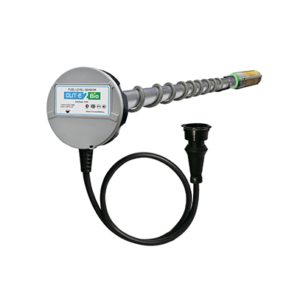
Various fuel types (summer diesel, winter diesel and especially biodiesel) have different permittivity values. DUT-E 2Bio has three measuring electrodes, what allows sensor to detect various fuel types automatically.
Various fuel types (summer diesel, winter diesel and especially biodiesel) have different permittivity values. That explains the difference in fuel volume measurement when capacitive fuel sensors are used. For taking that differences in account, DUT-E 2Bio differential fuel level sensors is made.
DUT-E 2Bio has three measuring electrodes, what allows sensor to detect various fuel types automatically. Advantages of DUT-E 2Bio differential fuel level sensor:
– automatically recognizes fuel types by predefined pattern
– makes automatic correction and measure fuel volume precisely
– detects tank fill-up and fuel draining volumes
– identifies fuel type change and indirectly evaluates fuel quality
– NEW! Automatic recognition of fuel type in a fuel tank, where the sensor is installed.
DUT-E 2Bio is used as part of GPS tracking system, vehicle telematics and fuel monitoring systems or as a replacement for standard vehicle FLS.
| Operation principle | Capacitive |
| Measurement inaccuracy | 1% |
| Operation temperature, °С | –40 .. +85 |
| Probe length, mm | 180-2500mm |
| Output signal | CAN j1939/S6, RS-232/485 Modbus, voltage or frequency, current |
Detection of fuel type change
Third measuring electrode of DUT-E 2Bio ensures automatic detection of fuel type change. Automatic detection of fuel type makes DUT-E 2Bio useful for preventing misuse or theft of different fuel types filled in fuel tank.
Employs S6 Technology
CAN/S6 interface of DUT-E 2Bio allows to connect up to 8 sensors into a single network together with other S6-compatible equipment. Data protocol is shared, data transfer and power supply of all units occurs via a single bus cable.
Built on new IoT Burger technology
IoT Burger Technology turns DUT-E 2Bio into a smart sensor able to process and analyze fuel level data before sending to GPS tracker unit. That includes temperature correction, signal filtration and linearization, self-diagnostics of sensor’ operation. Data refining allows to get clear and precise information on fuel volume remaining in tank, refueling and fuel discharges from tank. Self-diagnostics gives possibility to detect mistakes done during instillation and configuration, and choose proper way of problem resolution before coming and dismounting sensor from fuel tank.